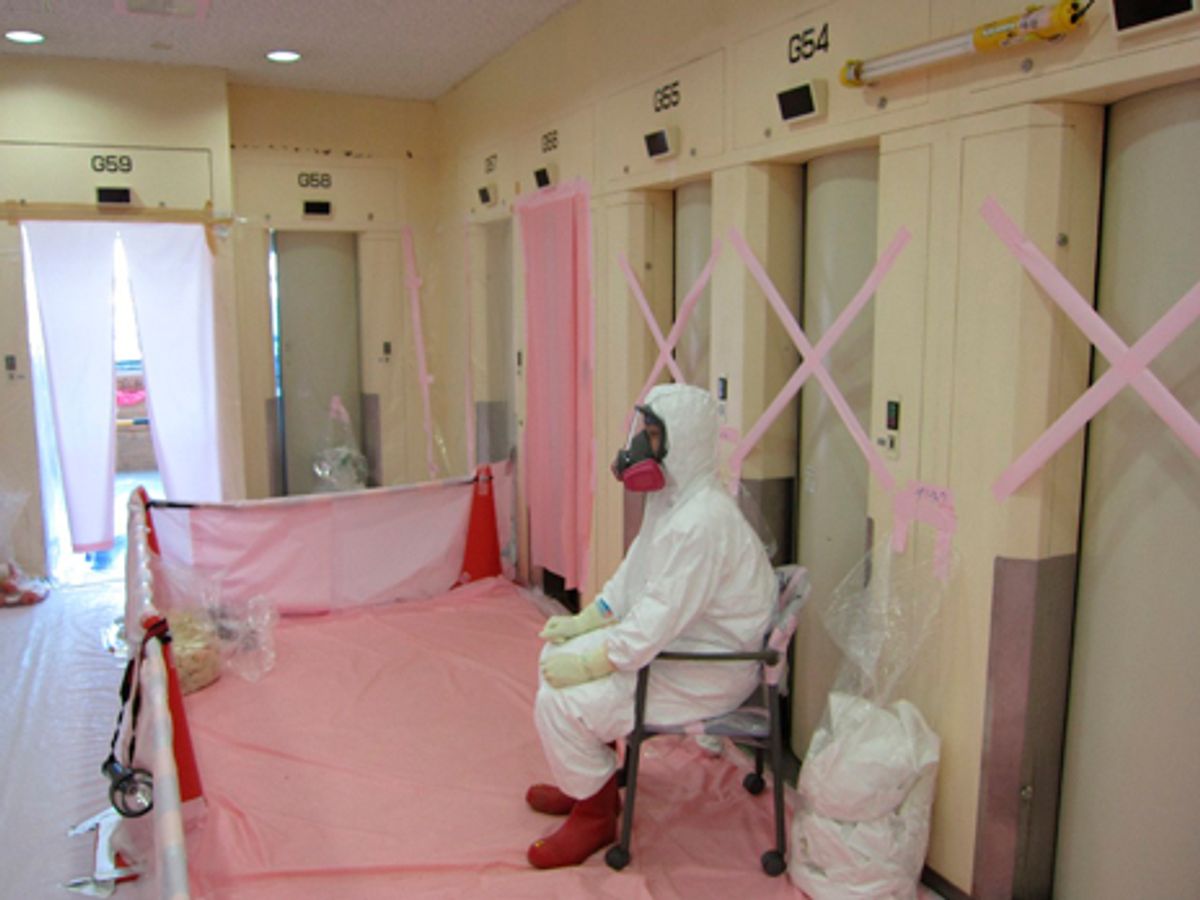Editor's Note: John Boyd is an IEEE Spectrum contributor reporting from Kawasaki, Japan. This is part of IEEE Spectrum's ongoing coverage of Japan's earthquake and nuclear emergency. For more details on how Fukushima Dai-1's nuclear reactors work and what has gone wrong so far, see our explainer and our timeline.
The number of workers at the troubled Fukushima nuclear plant exposed to dangerous levels of radiation is steadily mounting. After recently reporting that two of its employees had received radiation doses greater than the 250-millisieverts maximum level of radiation permitted in one year, Tokyo Electric Power Co. (TEPCO) said on Monday that six more workers could have exceeded that figure. The workers, all males in the 20s to 50s, were performing maintenance work or other jobs at the time of the earthquake.
A TEPCO official said that after power was lost on the site following the 11 March earthquake, workers were unable to read radiation monitors in the control rooms and in other buildings due to blackouts. The official added that although the company instructed the workers to wear protective masks, the instruction may “not have been timely or thorough enough.”
Following on the heels of this announcement, the Ministry of Health, Labour, and Welfare said on Tuesday that another 23 workers may have been exposed internally to over 100 millisieverts of radiation. Minister Risuo Hosokawa speaking to reporters said, “I told Tokyo Electric Power Co. to relieve from duty, the workers who were internally exposed to more than 100 millisieverts of radiation.”
According to the Ministry, TEPCO has so far provided provisional results of medical tests on roughly 3000 workers, out of the more than 3700 people who have so far worked on the plant, and it has asked TEPCO to complete the testing by 20 June. While the Ministry was making this announcement, news emerged that a male contract worker in his 60s had forgotten to replace the filter in his protective mask Tuesday morning and had ingested radiation on the site, though the amount is believed to be relative small.
Emergency control center questions
Separately, the results of a survey conducted by NHK, Japan’s national broadcaster, of 14 nuclear off-site emergency control centers located near nuclear plants around Japan indicates they would be unable to operate properly should an accident of similar magnitude as that of the Fukushima plant accident occur. These “rapid response” centers were designed to work as bases for the central and local governments and police in times of a serious nuclear accident, especially to aid in the evacuation of local residents.
But the control center for the Fukushima No. 1 plant was unable to operate as planned from the start, NHK reports, because of blackouts following the earthquake and tsunami and the fact that too few officials were able to reach the center. Then the officials that were present were forced to move to another location after just four days when radiation levels rose to dangerous levels in the vicinity of the center, which is located 5 km from the plant.
The government has spent some ¥15 billion ($187 million) on these facilities, yet failed to ensure most were equipped with ventilation filtering systems and other measures to prevent radiation contamination. NHK says that most of these centers are located between 2 and 13 km from the plants they are meant to oversee. Hidehiko Nishiyama, Deputy Director-General of the Nuclear and Industrial Safety Agency (NISA) has responded by saying a review of the centers is necessary, based on lessons learned from the Fukushima crisis.
Radioactive overflow threat
TEPCO is in race against time to prevent contaminated water on the site from overflowing. The dirty water leaking from the crippled reactors is rising in trenches near the turbine buildings, as workers inject water on a daily bases into the reactors to prevent them from overheating. TEPCO’s plan to decontaminate the water that it has so far transferred to a waste-water treatment facility and use it to cool the reactors has been delayed several times due to leaks and an improperly installed valve. Now TEPCO says it hopes to test out the system, which uses U.S. and French technology on Tuesday.
The company estimates it has only two weeks before the pooling water begins to overflow.




